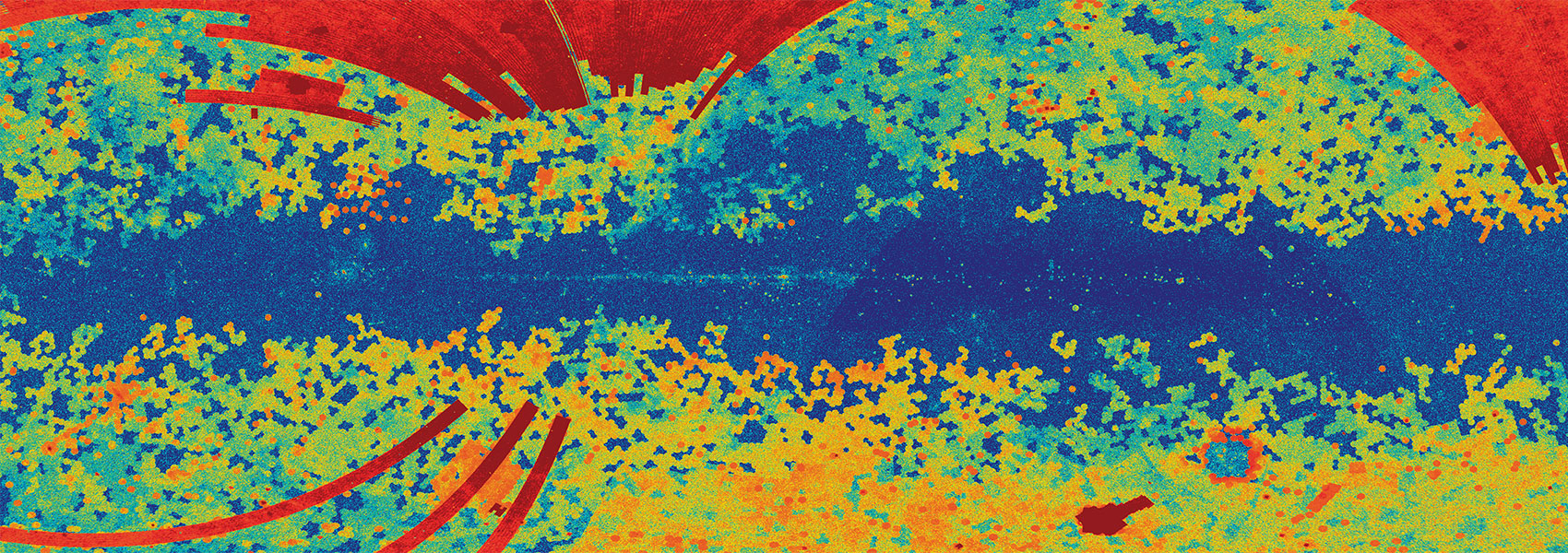August
2013
•
2013MNRAS.433.2485B
Authors
•
Brightman, M.
•
Silverman, J. D.
•
Mainieri, V.
•
Ueda, Y.
•
Schramm, M.
•
Matsuoka, K.
•
Nagao, T.
•
Steinhardt, C.
•
Kartaltepe, J.
•
Sanders, D. B.
•
Treister, E.
•
Shemmer, O.
•
Brandt, W. N.
•
Brusa, M.
•
Comastri, A.
•
Ho, L. C.
•
Lanzuisi, G.
•
Lusso, E.
•
Nandra, K.
•
Salvato, M.
•
Zamorani, G.
•
Akiyama, M.
•
Alexander, D. M.
•
Bongiorno, A.
•
Capak, P.
•
Civano, F.
•
Del Moro, A.
•
Doi, A.
•
Elvis, M.
•
Hasinger, G.
•
Laird, E. S.
•
Masters, D.
•
Mignoli, M.
•
Ohta, K.
•
Schawinski, K.
•
Taniguchi, Y.
Abstract
•
We present an investigation into how well the properties of the accretion flow on to a supermassive black hole may be coupled to those of the overlying hot corona. To do so, we specifically measure the characteristic spectral index, Γ, of a power-law energy distribution, over an energy range of 2-10 keV, for X-ray selected, broad-lined radio-quiet active galactic nuclei (AGN) up to z ∼ 2 in Cosmic Evolution Survey (COSMOS) and Extended Chandra Deep Field South (E-CDF-S). We test the previously reported dependence between Γ and black hole mass, full width at half-maximum (FWHM) and Eddington ratio using a sample of AGN covering a broad range in these parameters based on both the Mg II and Hα emission lines with the later afforded by recent near-infrared spectroscopic observations using Subaru/Fibre Multi Object Spectrograph. We calculate the Eddington ratios, λEdd, for sources where a bolometric luminosity (LBol) has been presented in the literature, based on spectral energy distribution fitting, or, for sources where these data do not exist, we calculate LBol using a bolometric correction to the X-ray luminosity, derived from a relationship between the bolometric correction and LX/L3000. From a sample of 69 X-ray bright sources (>250 counts), where Γ can be measured with greatest precision, with an estimate of LBol, we find a statistically significant correlation between Γ and λEdd, which is highly significant with a chance probability of 6.59× 10-8. A statistically significant correlation between Γ and the FWHM of the optical lines is confirmed, but at lower significance than with λEdd indicating that λEdd is the key parameter driving conditions in the corona. Linear regression analysis reveals that Γ = (0.32 ± 0.05) log10λEdd + (2.27 ± 0.06) and Γ = (-0.69 ± 0.11) log10(FWHM/km s-1) + (4.44 ± 0.42). Our results on Γ-λEdd are in very good agreement with previous results. While the Γ-λEdd relationship means that X-ray spectroscopy may be used to estimate black hole accretion rate, considerable dispersion in the correlation does not make this viable for single sources, however could be valuable for large X-ray spectral samples, such as those to be produced by eROSITA.
Links
-
SIMBAD
http://simbad.u-strasbg.fr/simbo.pl?bibcode=2013MNRAS.433.2485B
-
PREPRINT
http://arxiv.org/abs/1305.3917
-
DATA
http://archive.eso.org/bin/ads2eso?2013MNRAS.433.2485B
-
DATA
https://cda.harvard.edu/chaser?obsid=441,581,582,1431,1672,2239,2312,2313,2405,2406,2409,5015,5016,5017,5018,5019,5020,5021,5022,6164,8591,8592,8593,8594,8595,8596,8597,9575,9578,9593,9596,9718,12043,12044,12045,12046,12047,12048,12049,12050,12051,12052,12053,12054,12055,12123,12128,12129,12135,12137,12138,12213,12218,12219,12220,12222,12223,12227,12230,12231,12232,12233,12234
-
DATA
https://nxsa.esac.esa.int/nxsa-web/#bibcode=2013MNRAS.433.2485B
-
ELECTR
https://doi.org/10.1093%2Fmnras%2Fstt920




